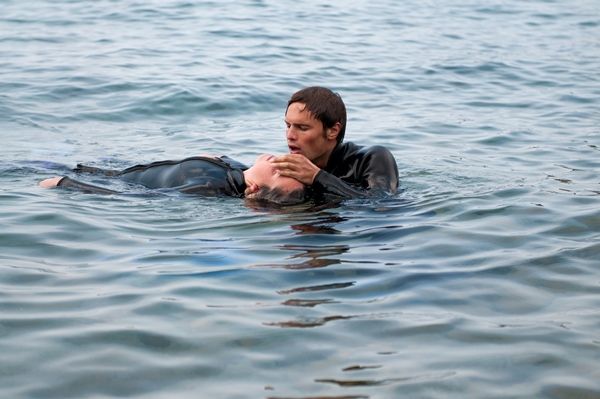Latest News
First Aid for Fishing
Monday, 13 April 2015
The team from Australia Wide First Aid have prepared this informative article for us keen anglers, it is well worth your reading.
https://www.australiawidefirstaid.com.au/
Fishing is a widespread leisure activity in Australia. What you may not have considered is that fishing incorporates many hidden dangers ranging from a hook in the finger, infected wounds, or drowning due to rough seas or unexpected currents.
Hook In the Finger
Fishhook injuries often occur when you are trying to remove a slippery, flopping fish from the hook and line. However, it doesn’t stop there. Rigging up your fishing rods, casting a line or walking bare foot near fishing gear (which we do not recommend) can also result in a fishhook in the skin. Trauma from a fishhook piercing the skin is common. Once the fishhook enters the skin beyond the barb, it can be difficult to remove. As the barb prevents a smooth backward removal, it is recommended for you to push the hook gently through the skin, following the curve of the hook, until the barb is released. Once through the skin, cut off the barb from the hook so the unbarbed portion of the hook can be smoothly removed through a backward motion, again following the curve of the hook. If a fishhook is in the eye, face or embedded deeply into muscle tissue, it is recommended you seek a medical professional for fishhook removal. A fishhook injury is considered dangerous and also may require professional medical attention if:
. The barb cannot be removed using home tools
. Bleeding is severe and cannot be stopped
. The wound is deep/wide enough to need stitches
. If the victim is pale, white, blue or has cold skin
. Decreased ability to move the affected area
. Numbness or tingling
Cleaning Fishing Wounds
Skin wounds from fishing products have a higher chance of infection due to the environment which they occur, involving bacteria from bait, fish and the delayed cleaning of the wound (due to being out at sea, or not having first aid equipment readily available). If you endure a cut or wound from fishing, Australia Wide First Aid recommends you to follow the first aid steps below:
1. Attempt to stop the bleeding before cleaning the wound
You can control external bleeding by putting pressure on or near the wound if there is an object embedded in it. When delivering first aid to a bleeding causality, your aim is to reduce the amount of blood loss. To do this, apply direct sustained pressure to the wound. Sit the causality down and elevate the wound area, where possible.
2. Clean the wound
Rinse the wound under cool, running water for 5 to 10 minutes. Washing the wound will remove as much dirt, debris and bacteria as possible which will reduce your risk of infection. If you don’t have access to clean running water, give it a good wash in the ocean or river. Be sure to wash it with clean running water when you return home. Large, deep or very dirty wounds are best to be evaluated by a medical professional immediately.
Drowning
As fishing is performed next to large bodies of wild and unpredicted water, knowing how to recognise drowning may just save a life. Drowning is not the violent, splashing call for help most people expect or see on television. If you are fishing off rocks or from a boat, make sure you look for the following signs if a fellow fisherman or nearby swimmer are immersed in rough, even still water:
. Head low in the water, mouth at water level
. Head tilted back and mouth open
. Eyes glassy and empty, unable to focus
. Eyes closed
. Hair over forehead and eyes
. Hyperventilating or gasping for air
. Trying to swim in a particular direction but not making headway
. Trying to roll over on to their back
. Appear to be climbing an invisible ladder
If a fellow fisherman falls over board and everything looks OK, don’t be so sure. Sometimes the most common indication that someone is drowning is that they do not look like they are drowning. They may just look like they are treading water and looking up at the deck of the boat or at the edge of the rocks/water front. One way to be sure is to ask them “ARE YOU ALRIGHT?”. If they can answer, they probably are. If there is no answer, you have approximately 30 seconds to get to them before they begin to disappear underwater.
This doesn’t mean the person splashing around in water and yelling for help isn’t in trouble. They are simply in aquatic distress. These victims are able to assist in their own rescue, such as grabbing onto floatation devices and kicking while you bring them to safety. This article was supplied by Australia Wide First Aid
This article was researched and created for the purpose of first aid information. It should not be used in place of advice from qualified health professionals.



